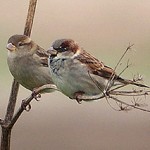Birds can help us keep track of overall pollution levels as a lot of pollution can show up in their eggs. From Nature:
Nesting birds that feed on insects that hatch in lake or stream-bed sediments may make good biomonitors for pollution, says Thomas Custer of the US Geological Survey’s Upper Midwest Environmental Sciences Center in La Crosse, Wisconsin. That’s because any contamination in the sediment will make its way into the birds and into their eggs and young.
An example, says Custer, is the tree swallow (Tachycineta bicolor), which still showed “significant quantities” of toxic chemicals called polychlorinated biphenols in its eggs and chicks seven years after remediation efforts started at a former capacitor-manufacturing plant in Crab Orchard National Wildlife Refuge in southern Illinois1. The findings “prompted further sediment removal”, he says.
Please check the source link for more.

Comments are closed.